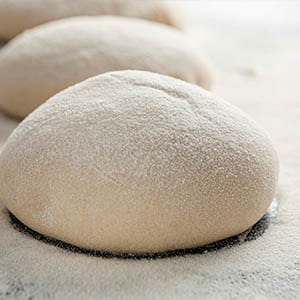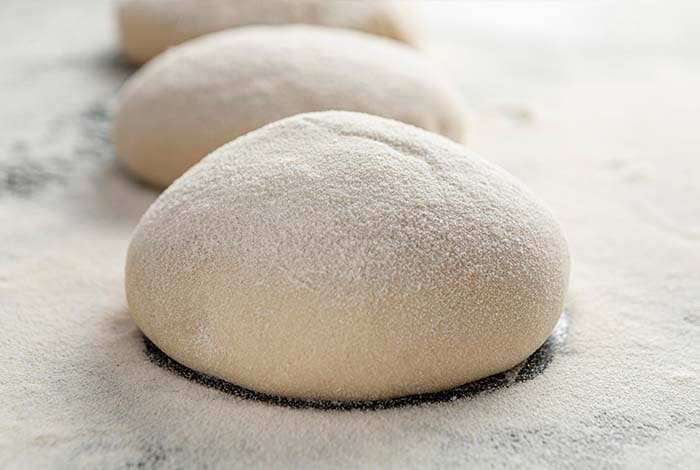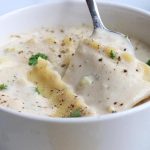Introduction to Pizza Dough
The pizza dough we know and love today has a rich history that dates back to ancient civilizations. Initially, these early forms of pizza were simple flatbreads with various toppings. However, it was in Naples, Italy, where pizza dough began to take the form we recognize now. This transformation was largely due to the introduction of New World ingredients like tomatoes. The importance of dough in pizza making cannot be overstated. It serves as the foundation of the dish, determining the pizza’s texture, flavor, and overall quality. A well-made dough can elevate the simplest ingredients into a culinary masterpiece, making it a critical skill for any pizza enthusiast.
Essential Ingredients for Classic Pizza Dough
Creating the perfect classic pizza dough requires understanding and balancing several key ingredients:
- Flour Types: The type of flour used significantly impacts the dough’s texture and flavor. All-purpose flour is commonly used, but bread flour, with a higher protein content, can provide a chewier texture.
- Yeast: The choice between fresh and dry yeast affects the dough’s rising time and flavor. Fresh yeast, often preferred by traditionalists, gives a distinct taste, while dry yeast offers convenience and longer shelf life.
- Water: The temperature of the water is crucial in activating yeast. Warm water is ideal, as hot water can kill the yeast, and cold water can slow down the fermentation process.
- Salt and Sugar: These ingredients play essential roles in flavor balancing. Salt controls yeast activity and enhances flavor, while sugar adds a slight sweetness and aids in browning the crust.
- Olive Oil: Olive oil contributes to the dough’s moisture, richness, and helps in creating a tender crust.
Equipment Needed
The right equipment can significantly affect the quality of your pizza dough:
- Mixing Tools: Choosing between hand mixing and a mixer depends on your preference and the dough’s needs. Hand mixing offers a traditional approach and greater control, while mixers provide convenience and consistency, especially for larger batches.
- Baking Tools: The type of oven and baking surface, like pizza stones or steel, influences the crust’s texture and evenness of cooking. Pizza stones mimic the effect of a traditional pizza oven, distributing heat evenly and drawing moisture from the dough for a crispier crust.
Preparing the Dough: Step-by-Step Guide
Creating the perfect pizza dough is both an art and a science. Here’s a detailed guide to help you master this essential skill:
- Mixing Ingredients:
- Begin by sifting your chosen flour into a large mixing bowl. This aerates the flour and ensures a smooth consistency.
- Add salt and sugar to the flour and mix them evenly.
- In a separate bowl, dissolve the yeast in warm water (ideally between 105°F and 115°F) to activate it. If using dry yeast, let it sit for about 5 minutes until it becomes frothy.
- Gradually pour the yeast-water mixture into the flour, mixing continuously. If you’re using a mixer, use a dough hook attachment on a low setting.
- Add olive oil and continue to mix until a rough dough forms.
- Kneading Techniques:
- Turn the dough onto a floured surface. Knead it by pressing down and forward with the heels of your hands, then folding it over and turning it by a quarter.
- Continue this process for about 10 minutes until the dough is smooth and elastic. It should spring back when poked.
- If the dough is too sticky, add a little more flour. If it’s too dry, add a few drops of water.
- Proofing: Time and Temperature:
- Place the kneaded dough in a lightly oiled bowl, covering it with a damp cloth or plastic wrap.
- Let it rise in a warm, draft-free area. The ideal proofing temperature is around 75°F to 85°F.
- Allow the dough to double in size, which usually takes about 1 to 2 hours depending on the room temperature and yeast type.
- Shaping the Dough:
- Once the dough has doubled, punch it down gently to release air bubbles.
- Turn it out onto a floured surface and divide it into portions if making multiple pizzas.
- Shape each portion into a ball and then flatten it into a disk. You can use a rolling pin or stretch it by hand, depending on your preference.
- Let the shaped dough rest for a few minutes before adding toppings. This final rest allows the gluten to relax and makes it easier to shape.
Following these steps will help you create a classic pizza dough that’s ready for your favorite toppings and a trip to the oven.
Advanced Tips for Perfect Dough
To elevate your pizza dough, consider these expert tips:
- Hydration Ratios: The ratio of water to flour, known as hydration, is crucial. A higher hydration (around 60-70%) results in a lighter, airier crust, but can be trickier to handle. For beginners, a lower hydration (around 50-60%) might be more manageable.
- Aging the Dough: Overnight Fermentation: Allowing your dough to ferment in the refrigerator overnight (or up to 72 hours) can significantly enhance its flavor and texture. This slow fermentation process develops a more complex taste.
- Handling Sticky Dough: High-hydration doughs tend to be sticky. To handle this, use a well-floured surface and hands, and work quickly. Resist the urge to add too much extra flour, as this can alter the dough’s texture.
Common Mistakes to Avoid
Avoid these common mistakes for better dough:
- Over-kneading: This can lead to a tough crust. Once the dough is smooth and elastic, stop kneading.
- Incorrect Temperature: Both in water for yeast activation and during proofing. Too hot can kill the yeast, too cold can inhibit its activity.
- Dough Consistency Issues: Achieving the right balance of ingredients is key. If the dough is too wet or dry, adjust with small amounts of flour or water.
FAQs
Addressing some frequently asked questions:
- Can I freeze pizza dough? Yes, for up to 3 months. Thaw in the refrigerator overnight before use.
- How long should I knead the dough? Typically, 10-15 minutes until it’s smooth and elastic.
- Whole wheat vs. white flour: Whole wheat flour adds nutritional value but can make the dough denser. A mix of both can be a good compromise.
- Solutions to common dough problems: Adjust hydration, kneading time, and proofing conditions based on the dough’s behavior.
Conclusion and Final Thoughts
In conclusion, mastering the classic pizza dough is a blend of science and art. Remember, each ingredient and step in the process plays a crucial role in the final outcome. Don’t be afraid to experiment with different flours, hydration levels, and fermentation times to find what works best for you. Happy baking and enjoy the delicious results of your efforts!

Classic Pizza Dough Recipe
Equipment
- Mixing bowl
- Measuring Cups and Spoons
- Dough scraper (optional)
- Rolling pin (optional)
- Pizza stone or baking sheet
- Oven
Ingredients
- 4 cups 500g all-purpose flour (or bread flour for a chewier texture)
- 1 tsp sugar
- 2 tsp salt
- 1 packet 7g dry yeast
- 1 1/2 cups 355ml warm water (about 110°F/45°C)
- 2 tbsp olive oil plus extra for greasing
Instructions
- Prepare the Yeast Mixture:
- In a small bowl, dissolve sugar in warm water. Sprinkle the yeast over the top and let it sit for 5 minutes, or until it becomes frothy.
- Mix the Dry Ingredients:
- In a large mixing bowl, combine the flour and salt.
- Combine Wet and Dry Ingredients:
- Make a well in the center of the flour mixture. Pour the yeast mixture and olive oil into the well.
- Gradually mix the ingredients together until a dough begins to form.
- Knead the Dough:
- Turn the dough onto a floured surface and knead for about 10 minutes, until it is smooth and elastic.
- If the dough is too sticky, add a little more flour. If it's too dry, add a bit more water.
- First Proofing:
- Place the dough in a lightly oiled bowl, turning it to coat all sides with oil.
- Cover the bowl with a damp cloth or plastic wrap and let it rise in a warm place for about 1 to 2 hours, or until it doubles in size.
- Punch Down and Shape:
- Once the dough has doubled, punch it down gently to release air bubbles.
- Divide the dough into 2 or 4 equal parts, depending on the size of pizzas you want.
- Shape each part into a ball, then flatten into a disk. Let them rest for a few minutes before stretching out into pizza bases.
- Final Proofing:
- After shaping, let the dough rest for another 10-15 minutes before adding toppings.
- Bake:
- Preheat your oven to its highest setting, ideally around 475°F (245°C).
- Add your favorite toppings to the stretched dough.
- Bake for 10-15 minutes or until the crust is golden and the cheese is bubbly.
- Note: For an even better flavor, try the overnight fermentation method by placing the kneaded dough in the refrigerator for 24-72 hours. Allow it to come to room temperature before shaping.
Notes
- For a thinner crust, divide the dough into more pieces.
- The dough can be frozen for up to 3 months. Thaw in the refrigerator overnight before use.
- Experiment with different flour types like whole wheat for a healthier option.
- Overnight fermentation in the refrigerator enhances the flavor.





